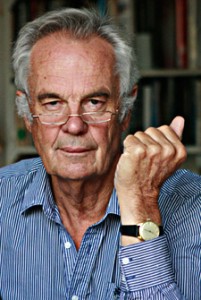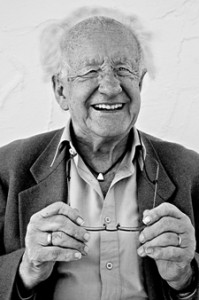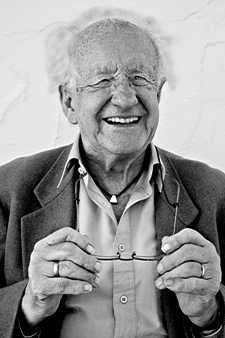Archive for the ‘Reconciliation & forgiveness’ Category
Russia and its radicalizing Muslims
By Jonathan Power
Russia stands at a major cross roads as it works out how exactly to deal with the 14.5 million ethnic Muslims that live inside its borders. If added to this are the migrant workers from Central Asia and Azerbaijan the total is around 20 million. Compare this with Germany which has 5 million and France which has 6 million Muslims.
This is quite a cupful to swallow. The Kremlin has struggled for decades to deal with Muslim ways and demands. When communism collapsed it was relatively easy to restore the Orthodox Church to its traditional preeminence. But dealing with the Muslims is much less straightforward. Besides being a religion they are a political force.
The relationship between the power of the Kremlin and the developing power of Islam was seriously put to the test in the 1990s by the wars for independence in the southern Muslim states of Chechnya and Dagestan. Today stability is threatened by the growing appeal of the Islamic State, ISIS, among disaffected Islamic youth.
If Chechyna (now pacified) was the catalyst for the initial spread of militant Islamism, IS is now the threat that can spear the soft underbelly of southern Russia. Read the rest of this entry »
The clouds are dark and getting darker
By Johan Galtung
The process has now gone full circle, from Sykes-Picot Agreement negotiated from 1915 to 16 May 1916, about control of the Ottoman Empire, when beaten, to England now joining France in bombing Syria. “Violence In and By Paris” two weeks ago was wrong about England wanting to stay out: the House of Commons on 02 Dec 2015 voted 397 to 223 for bombing; 56 Labor MPs for, only 7 Conservative MPs against.
Russia played a minor role in Sykes-Picot as now also in bombing maybe mainly the opposition to Assad.
As Robert Savio points out, “They all fight to the last Syrian.”
The likelihood of an atrocious Paris 13 November type violence in London went up many points. And Russia had a civilian plane bombed.
The USA is as addicted to bombing as a hammer to a nail, not only to use allies and train locals. James A. Lucas, “The United States has killed more than 20 million people in 37 nations since WWII”, in 1945 (jlucas511@woh.rr.com) seems not to be enough; they just go on and on. More than a million Muslims killed in West Asia mainly by the USA since 1991. In San Bernardino, somebody may have killed 14 in revenge.
The new name for what they fight, after jihadism, is the Islamic State, calling it sometimes IS, ISIS, ISIL. What is it, this Daesh?
There seem to be heavy elements of Saddam’s army, the Baath secular party (also Assad’s), and the Tikrit clan from the recent past–now adding maybe ten fighters for each killed by the West. Daesh seems to Read the rest of this entry »
School mediation – problems and solutions
By Johan Galtung
The world wave of mediation has reached school systems all over; in some countries less, in others more. Like in Spain, as evidenced by this heavily oversubscribed seminar on school mediation. When asked to express what they want to see happen in schools, the most frequent answer was convivencia, living togetherness. In one word, not as a composite concept. Like in Japanese, the one word is kyosei.
What does it mean, concretely? I would interpret it as positive peace at school. Something behavioral: cooperation for mutual and equal benefit. Equity. Something attitudinal, emotional resonance, I enjoy your joy, I suffer your suffering: Empathy. Harmony.
But the school is a big, holistic place. Not only children, but also adults, teachers and staff. And parents. Positive togetherness within and between all these four groups? A huge order.
Many simplify this to togetherness among children, and not positive, only less negative. Less bullying, to protect victims – parents demand that – and to use teacher time for teaching, not keeping discipline–the staff demands that. However, it all hangs together.
In addition, simplification runs against another big world wave of two values: diversity and equality, against homogeneity-verticality. Read the rest of this entry »
Cultures of war, cultures of peace
By Johan Galtung
We have war and peace, theory and practice. And deeper down cultures of war and peace, notions of what the world is or could be. The latter is not necessarily peace, could also mean removing obstacles to war.
Timothy Snyder, “Hitler’s World” (NY Review of Books, 24 Sep 2015) and Greg Grandin, “The Kissinger Effect: The relentless militarism of the national-security state and its perverse justification begin with Henry Kissinger” (The Nation, 28 Sep 2015) are both on that line.
Hitler’s World derives from Darwinist struggle for niches, with survival of the fittest. His niche is not the whole world but what is needed to feed the German people, and here Ukraine plays a major role. The food chain is key to the image, with humans on top, eating animals and plants, but not eaten by them. So also for the human species, divided in races with the Aryan race on top, “fittest” as evidenced by domination all over; never slaves. On top of them are the Germans; their state not an end but the military arm obliged to be strongest.
To Hitler that world is natural, and inherently stable. Values, equality, human rights, equal right to life, Christianity, capitalism, communism, are anti-natural. For Hitler such ideas…
School shootings in the USA: 10 points
By Johan Galtung
The Oregon community college was “the 45th school shooting this year in America; the 142nd school shooting since the Newton massacre in 2012”, Matthew Albracht–Peace Alliance–who adds: 25% of women experience domestic violence, 6 million children witness it every year, 28% of children are bullied during the year and they are 2 to 9 times more likely to commit suicide.
What can be done? Here 10 points:
Gun control, of course.
But the point is not only sales control but possession control with very strict laws for possession and making illegal possession a federal crime. With an average of at least one lethal weapon per citizen, there are enough arms to continue shootings; sales control is insufficient. States and municipalities can endorse this ahead of time for Weapons Free Zones in America, as places where life is safer. There will still be armed police around.
Less violent foreign policy, of course.
Believing that serious change in domestic violence is possible without serious change from violent to solution-oriented foreign policy is unspeakably naive. “If my government can kill whoever stands in our way so can I; if we think we are exceptional, above the law, so am I, as a US citizen” is a psycho-mechanism that can only be beaten by destroying the premise. A government solving problems instead of bombing their way through will have an equally strong effect on the citizens, but this time positive.
Less violent media, of course.
The point is not only less violence, with copycat danger. The point is deeper: media that focus on solutions; journalists who systematically ask politicians “what is Read the rest of this entry »
PlayforRights Celebration on International Artists Day
By Elías Abraham-Foscolo with Jan Oberg
We would like to count on your presence as well as people you may know interested in our activities.
PlayforRights Celebration on International Artists Day
PlayforRights organizes this event (see poster below) to raise awareness and consciousness about the following statement: “The arts contribute to the field of human rights by making visible the human dimension”.
Why do we do this in a celebrative way? 25th of October can be seen as any other ordinary day but for members of PlayforRights it is not. This date is very important moment of the year where we all, the civil society, shall meet together and raise awareness about the potential of the art expressions within processes of social change.
For this, we need to recognise that the arts are ways of nurturing love, that art is Read the rest of this entry »
The Columbia Peace Accords
By Johan Galtung
Bogotá, 30 Sep 2015
The accords were signed a week ago with still much work to do this coming half a year. 23 March 2016 is the deadline.
However, are they peace accords? Or absence of violence eliminating “that other army”, for Weber’s state monopoly on ultima ratio regis, even strengthening the government’s army? That Western concept of peace practiced recently in Sri Lanka and Nepal, against LTTE (Liberation Tigers of Tamil Eelam) and Maoists? Leaving untouched the problems that brought them into being unsolved?
And the word “peace” violated, as “conflict”, saying “post-conflict”, as if nothing more to solve. Words matter; handle them with care.
In all the Colombian conflict complexity, the focus is on only one conflict, between the violent parties: Read the rest of this entry »
Islam and the West: Roads to peace
By Johan Galtung
Alfàs del Pi, Spain – International Center for Conflict Solution – Seminar 11-13 September
The prospects are dim. Both focus on the worst in the Other, not on the best. Islam justifies terrorist violence – bombs, decapitation – as revenge with moderation; West justifies state terrorist violence – bombing, droning, sharp-shooting all over – as preventive violence. Killing ratio: like 1:99. Both are escalating in a violence race.
West is Christian-secular with secularisms–humanism, liberalism, marxism–sharing with Islam and Christianity occidental singularism and universalism, the only truth, valid for all, at all times. A miracle that we have had only the terrible Crusades 1095-1291.
One reason was geographical, in space: Islam in deserts and on islands, Christianity in the temperate zone; today both are all over. Another reason was historical, in time: Christianity in Antiquity, Islam in the Middle Ages, Christianity-secularism-colonialism-West in Modernity. Enters post-Modernity: Islam’s turn to be predominant.
Empty cathedrals and churches in Western societies with much loneliness and alienation; in Islam overfilled mosques with intense togetherness and direct sharing. The contradiction is bridged by massive conversion to Islam, more so the more loneliness; and by turning against one’s country if it joins the USA killing Muslims.
The predictable emergence of an Islamic State, Read the rest of this entry »
The Pope’s challenge to white America.
By Jonathan Power
September 22nd 2015.
The pope will cause waves in America during his visit this week. Invited to speak before Congress by the Speaker of the House of Representatives, John Boehner, he’ll arrive right at the time that the Republican candidates for president are touting ideas that are anathema to Pope Francis.
He detests the cruder aspects of capitalism and the consumer life style so rife in America. The culture of Wall Street and its banks, in particular their performance in precipitating the crash of 2007 and their rush to avoid culpability, he finds distasteful.
Nor has he much time for those who turn their back on the needs of the poor, the unemployed, the discriminated against, those unnecessarily imprisoned or the migrant.
Nor will American political leaders find him giving any support for the kind of wars fought by the US since 9/11. The Republicans will find him way to the left, except on the issue of abortion.
The Pope is unlikely to rattle through the statistics but I’m sure he knows what the facts are.
The US now ranks lowest among affluent nations in how it spreads its wealth. It has the worst poverty, the lowest life expectancy, the highest rate of infant mortality and the shortest (or non-existent) maternity leave among the world’s richest 21 nations.
It is nearly the worst in its mental health provisions, the degree of child poverty and its numbers of obese. Read the rest of this entry »
Toward a Northeast Asian Community
By Johan Galtung
Tokyo-Yokohama-Okinawa
Abe’s policy of “collective self-defense”, an alliance with the most belligerent country in the world, USA, with 248 military interventions abroad since 1805–78 after the Second World War– is a policy of national insecurity. It involves Japan in US armed conflicts all over, eg., against the Islamic State with revenge against Japan, and in arms races easily leading to war. And the TPP-CSD makes Japan a periphery of a US economy with deep problems, also reducing welfare. All this is masked by focusing on the past, and on apologies.
Positive Peace, from 1958, means cooperation with equity, harmony with empathy, institutions-fusion-transmission by inspiring others; nothing military, no arms. The Japanese government uses such words for the opposite of what they stand for: A Peace Umbrella, not neo-AMPO (Treaty of Mutual Cooperation and Security between the United States and Japan).
Negative Peace, aka security, stands for the absence of violence and war by removing the causes through conflict solution and trauma conciliation; in the Japanese approach, there is no conflict solution.
And now a peace formula… Continue reading here



